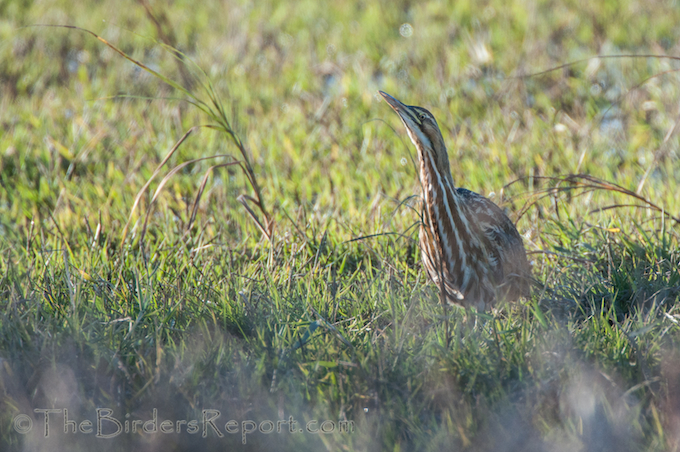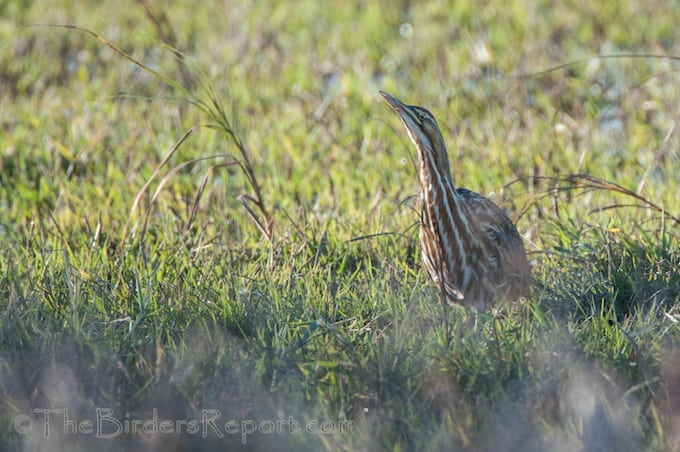I have seen quite a few American Bitterns (Botaurus lentiginosus) over the years but most I didn’t spot until they were startled into flight. That all changed last November when I spotted this bird out in the open at Sacramento National Wildlife Refuge.
The American Bittern is a solitary, secretive, cryptically colored heron that breeds in freshwater wetlands from the mid-United States to northern Canada1. Range Map courtesy of South Dakota Birds and Birding.


They usually frequent freshwater wetlands with tall, emergent vegetation but this particular bird was stepping out into the open, probably foraging for amphibians or small fish in the flooded marshy area near the end of the auto loop of the refuge.

When approached the American Bittern often stands rigid with their bill pointing up creating excellent camouflage in the reeds with the vertical stripes on their breast.

I was able to snap off a couple of in flight shots of this bird as it took flight to another part of the refuge.

Note the distinctive “hump” of the back of the American Bittern in flight.

Even more distinctive of this species is their call. They communicate throughout their visually restrictive habitat with a low, deep, resonant pumping sound accomplished through inflation of the esophagus, during which the bird contorts itself violently. Check out this video of the American Bittern creating this call.
If you enjoy learning about birds from around the world and seeing some great bird photos, check out Wild Bird Wednesday and The Bird D’pot.
References:1Birds of North America Online
Larry Jordan
Larry Jordan is an avid birder and amateur photographer living on the Pacific Flyway near the Central Valley of Northern California. He is a board member of his local Audubon Society and is a bird and wildlife conservationist. Larry contributes to several wildlife conservation organizations and is a BirdLife International "Species Champion." He is also Habitat Manager for the Burrowing Owl Conservation Network, an organization dedicated to the protection and restoration of the Western Burrowing Owl population in the United States. Larry has been blogging about birds since September of 2007 at TheBirdersReport.com


Leave a Reply